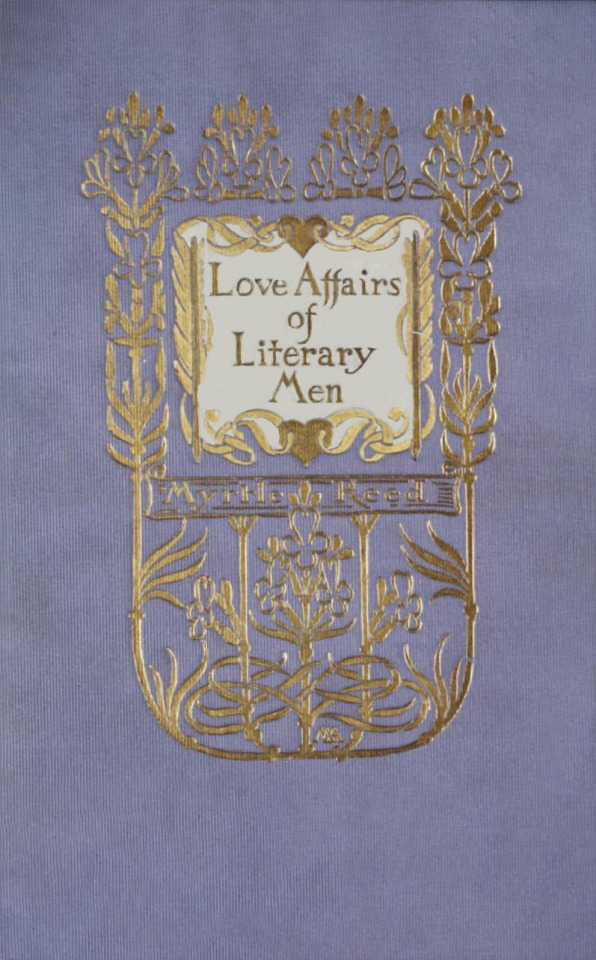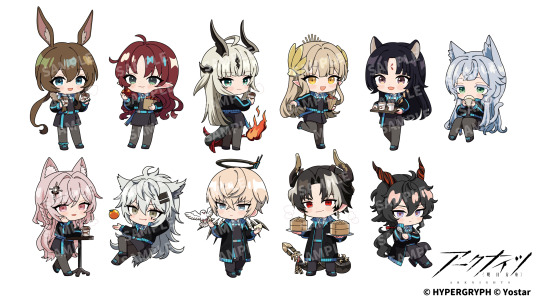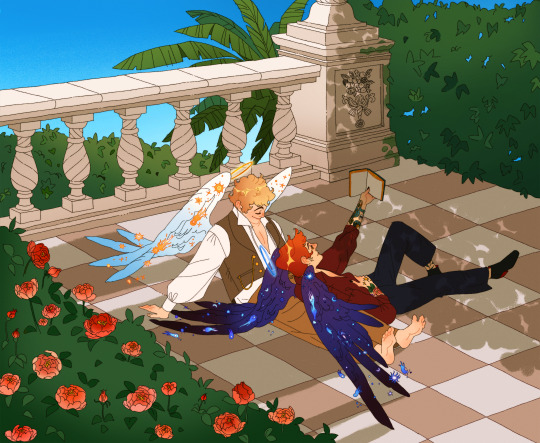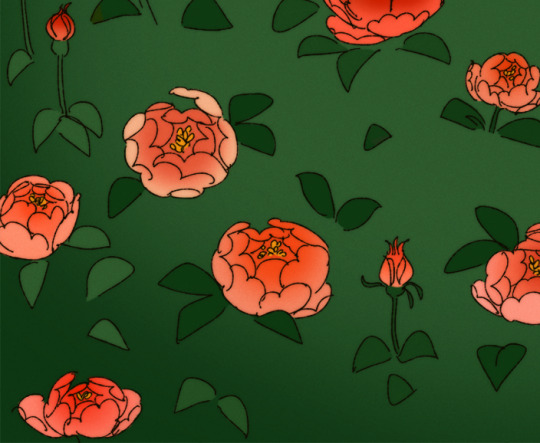#Myrtle Reed
Explore tagged Tumblr posts
Text

~ The Myrtle Reed Year Book, 1911
432 notes
·
View notes
Text

A bird is joy incarnate.
鳥は喜びの化身��ある。
Myrtle Reed マートル・リード
85 notes
·
View notes
Text
“…a love so vast and deep that it could not be measured by finite standards; of infinite pity and infinite pardon. This love was every-where; it was impossible to conceive of a place where it was not—it enveloped not only the whole world, but all the shining worlds beyond. And this love, in itself and of itself, was God.”
— A Spinner in the Sun, Myrtle Reed
#Myrtle Reed#A Spinner in the Sun#one of my favorite lines in this book#oh Myrtle Reed save me save me Myrtle Reed (she has)#love as tenderness#love as pity#love as religion#typography#love as salvation#softness#tenderness
28 notes
·
View notes
Text

THE LOVE AFFAIRS OF LITERARY MEN by Myrtle Reed. (New York/London: Putnam, 1907). Cover design by Margaret Armstrong.
#beautiful books#book blog#books books books#book cover#books#vintage books#edwardian books#myrtle reed#margaret armstrong#book design
70 notes
·
View notes
Text
I've always thought my flowers had souls.
Lavender and Old Lace by Myrtle Reed
1 note
·
View note
Text

Lavender and Old Lace, Myrtle Reed (1902)
#reading this rn and it’s soo cute#classic literature#lavender and old lace#myrtle reed#edwardian#book cover
1 note
·
View note
Text
"There is nothing so dead as a woman's dead love. When the fire goes out and no single ember is left, the ashes are past the power of flame to rekindle."
- Old Rose & Silver
1 note
·
View note
Text










older stuff
#arknights#my art#poncirus#archetto#degenbrecher#reed#valarqvin#typhon#myrtle#lappland#kroos#texas#penance#eyjafjalla
346 notes
·
View notes
Text

Arknights x Animate Cafe
#jp server#merch#amiya#myrtle#reed#reed the flame shadow#muelsyse#saga#rosmontis#pozyomka#lappland#executor#chongyue#ebenholz
119 notes
·
View notes
Text
February 2025 Witch Guide
New Moon: February 27th
First Quarter: Feb 5th
Full moon: February 12th
Last Quarter: February 20th
Sabbats: Imbolc- February 1st
February Ice Moon
Also known as: Cleansing Moon, Deep Snow Moon(Mahican), Eagle Moon(Cree), Bear Moon(Ojibwe), Black Bear Moon(Tlingit), Bony Moon(Cherokee), First Flowers Moon(Catawba), Goose Moon(Haida), Groundhog Moon(Algonquin), Hungry Moon(Cherokee), Ice Moon, Midwinter Moon(Oneida), Raccoon Moon(Dakota), Sleet Moon(Comanche), Solmonath, Suckerfish Moon (Ojibwe) & Quickening Moon
Element: Fire
Zodiac: Aquarius & Pisces
Nature spirts: House Faeries
Deities: Aphrodite, Brigid, Demeter, Diana, Juno, Kuan-Yin, Mars & Persephone
Animals: Otter
Magical: Unicorn
Birds: Chickadee & Eagle
Trees: Cedar, laurel, myrtle & rowan
Herbs: Balm of Gilead, hyssop, myrrh, sage & spikenard
Flowers: Primrose
Scents: Heliotrope & wisteria
Stones: Amethyst, jasper, moonstone, obsidian, onyx, pearl, rose quartz, red zircon &topaz
Issues, intentions & powers: Astral travel, banishing, beginnings, empowerment, fertility & purification
Energy: Breaking bad habits, creative expressiveness, energy working to the surface, forgiveness, freedom, friendships, future plans, growth, healing, problem solving, purification, responsibility & science
The explanation behind February’s full Moon name is commonly known as the Snow Moon. This is due to the typically heavy snowfall that occurs in February. On average depending on location & climate conditions, February can be one of the snowiest months of the year according to data from the National Weather Service.
• In the 1760s, Captain Jonathan Carver, who had visited with the Naudowessie (Dakota), wrote that the name used for this period was the Snow Moon, “because more snow commonly falls during this month than any other in the winter.”
Imbolc
Known as: Brigid’s day, Feast of Torches, Feast of Waxing Light & Oimelc
Season: Winter
Element: Air
Symbols: Besoms, Brigid’s cross, candles, candle wheels, corn dolls, cauldrons, fire, ploughs, priapic wands & white flowers
Colors: Black, brown, green, lavender, orange, pink, red, white & yellow
Oils/Incense: Apricot, basil, bay, carnation, chamomile, cedar, cinnamon, dragon's blood, frankincense, heather, jasmine, myrrh, neroli, peppermint, red sandalwood, sage(green), styrax, vanilla, violet & wisteria
Animals: Badger, cow, deer, groundhog, sheep & snake
Birds: Lark, robin & swan
Stones: Amethyst, bloodstone, ×citrine, clear quartz, garnet, green tourmaline, hematite, iron, lodestone, onyx, red zircon, rose quartz, ruby, turquoise & yellow tourmaline
Mythical: Dragon
Food: Ale, breads, chives, cider, cornmeal, curry, dairy products, dried fruit, dried meats, eggs, garlic, grains, herbal teas, honey cakes, lamb, mead, muffins, nuts, onions, peppers, poppy seed cakes, pork, potatoes, poultry, pumpkin seeds, raisins, scones, spiced wine & sunflower seeds
Herbs/Plants: Angelica, ashleaf, balsam, basil, bay, benzoin, blackberry, celandine, clover, coltsfoot, coriander, dragon's blood, garlic, lemon, myrrh, reed, rosemary, sage, vervain, wheat, witch hazel & wormwood
Flowers: Chamomile, crocus, daffodil, heather, iris, rose hips, sunflower, tansy & violet
Trees: Blackthorn, cedar, rowan & sycamore
Goddesses: Anu, Aradia, Arianrhod, Artio, Athena, Branwen, Brigid, Danu, Februa, Gaia, Inanna, Juno, Selene, Selu, Sirona & Vesta
Gods: Aengus Mac Og, Bragi, Cupid, Dian Cecht, Dumuzi, Eros, Februus & Pax
Tarot cards: Death, The Empress & The Star
Spellwork: Air magick, cleansing, divination, fertility & new beginnings
Issues, Intentions & Powers: Awakening, animals, banishing, beginnings, change, fertility, healing, hope, illumination, inspiration, light, patience, pregnancy/childbirth, prophecy, prosperity, purification, transformation, well-being & youth
Activities:
•Make & light white candles
• Clean/decorate your altar & consecrate your altar tools
• Go on a walk in nature & look for signs of spring
• Make a Brigid’s Cross
• Have a feast with your family/friends
• Give thanks & leave offerings to the Earth
• Set intentions, reflect & look deeper into your goals for spring
• Start a bonfire
• Bless new projects
• Clear snow/ice from public walkways
• Gather & distribute warm clothes, hand warmers & blankets to those who need it
• Pepare plans for your upcoming garden
• Craft a priapic wand
• Spend time with children celebrating Imbolc by making crafts & or baking
• Make or buy new magical tools
• Practice divination & fire scrying
• Draw a cleansing ritual bath for yourself
• Meditate, reflect & say your farewells to winter
• Cleanse & clean your house to prepare for spring
• Create a Brídeóg: a doll of Brigid made of straw
• Make Bride’s bouquet satchets & exchange as symbols of good luck and fertility
• Set aside seasonal food & or drinks as an offering to Brigid to invite her in your home
• Find Imboloc prayers & devotionals that bid farewell to the winter months & honor the goddess Brigid
Imbolc is a Gaelic festival marking the beginning of spring. Most commonly it is held on January 31 – February 1, or halfway between the winter solstice & the spring equinox. The holiday is a festival of the hearth, home, a celebration of the lengthening days & the early signs of spring.
• It is suggested that Imbolc originally marked the onset of the arrival of fresh sheep milk after a period of food shortage & the beginning of preparations for the spring sowing.
The word “imbolc” means “in the belly” and refers to the pregnancy of ewes at this time of year. The term “oimelc” means ewe’s milk. Around this time of year, many herd animals give birth to their first offspring of the year or are heavily pregnant & as a result, they are producing milk.
Imbolc is mentioned in some of the earliest Irish literature and it is associated with important events in Irish mythology. It is believed that Imbolc was originally a pagan festival associated with the lambing season and the goddess Brigid. It's believed that Imbolc was Christianized as a festival of Saint Brigid, who herself is thought to also be a Christianization of the goddess.
• Joseph Vendryes and Christian-Joseph Guyonvarc'h suggested that it may have also been a purification festival, similar to the ancient Roman festival Lupercalia which took place at the same time of year.
Some scholars argue that the date of Imbolc was significant in Ireland since the Neolithic. A few passage tombs in Ireland are aligned with the sunrise around the times of Imbolc & Samhain.
Related festivals:
•Groundhog Day: February 2nd-
Is a tradition observed in the United States & Canada every year. It derives from the Pennsylvania Dutch superstition that if a groundhog emerges from its burrow on this day & sees its shadow, it will retreat to its den & winter will go on for six more weeks; if it does not see its shadow, spring will arrive early.
• While the tradition remains popular in the 21st century, studies have found no consistent association between a groundhog seeing its shadow & the subsequent arrival time of spring-like weather.
•St. Brigid’s Day: February 1st-
Celebrates the beginning of spring and the celebration of Lá Fhéile Bríde, St Brigid’s Day. The day has long symbolised hope, renewal and the feminine.
•Because Saint Brigid has been theorised as linked to the goddess Brigid, some associate the festival of Imbolc with the goddess.
St. Brigid is the patroness saint (or ‘mother saint’) of Ireland. She is patroness of many things, including poetry, learning, healing, protection, blacksmithing, livestock & dairy production. In her honour, a perpetual fire was kept burning at Kildare for centuries & a recent campaign successfully established her feast day as a national holiday in 2023.
The customs of St Brigid's Day did not begin to be recorded in detail until the early modern era. In recent centuries, its traditions have included weaving Brigid's crosses, hung over doors and windows to protect against fire, illness, and evil spirits. People also made a doll of Brigid (a Brídeóg), which was paraded around the community by girls, sometimes accompanied by 'strawboys'. Brigid was said to visit one's home on St Brigid's Eve. To receive her blessings, people would make a bed for Brigid, leave her food and drink, and set items of clothing outside for her to bless. Holy wells would be visited, a special meal would be had, and the day was traditionally linked with weather lore.
• Candlemas: February 2nd-
Is a Christian feast day on February 2nd commemorating the presentation of Jesus at the Temple. It is based upon the account of the presentation of Jesus in Luke 2:22-40.
•While it is customary for Christians in some countries to remove their Christmas decorations on Twelfth Night, those in other Christian countries historically remove them after Candlemas.
On Candlemas, many Christians also take their candles to their local church, where they are blessed and then used for the rest of the year. For Christians, these blessed candles serve as a symbol of Jesus Christ, who is referred to as the Light of the World.
•Setsubun: February 2nd-
Is the day before the beginning of spring in the old calendar in Japan. The name literally means 'seasonal division’, referring to the day just before the first day of spring.
Both Setsubun & Risshun are celebrated yearly as part of the Spring Festival (Haru matsuri ) in Japan. In its association with the Lunar New Year, Setsubun, though not the official New Year, was thought of as similar in its ritual & cultural associations of 'cleansing’ the previous year as the beginning of the new season of spring. Setsubun was accompanied by a number of rituals & traditions held at various levels to drive away the previous year’s bad fortunes & evil spirits for the year to come.
• The commonly practiced tradition of throwing of roasted soybeans (called "fukumame") in order to drive away evil spirits & bring good fortune into one's home is upheld by both places of worship & regular people. Then, as part of bringing luck in, it is customary to eat roasted soybeans, one for each year of one's life (kazoedoshi), plus one more for bringing good luck for the year.
Other celebrations:
• Lupercalia: February 13-15th-
In ancient Rome, this festival was conducted annually on February 13th through 15th under the superintendence of a corporation of priests called Luperci. The origins of the festival are obscure, although the likely derivation of its name from lupus (Latin: “wolf”) has variously suggested connection with an ancient deity who protected herds from wolves & with the legendary she-wolf who nursed Romulus & Remus. As a fertility rite, the festival is also associated with the god Faunus to purify the city, promoting health & fertility.
Each Lupercalia began with the sacrifice by the Luperci of goats & a dog, after which two of the Luperci were led to the altar, their foreheads were touched with a bloody knife & the blood was wiped off with wool dipped in milk; the ritual required that the two young men laugh. The sacrificial feast followed, after which the Luperci cut thongs from the skins of the sacrificial animals & ran in two bands around the Palatine hill, striking with the thongs at any woman who came near them. A blow from the thong was supposed to render a woman fertile.
In 494 CE the Christian church under Pope Gelasius I forbade participation in the festival. Tradition holds that he appropriated the form of the rite as the Feast of the Purification (Candlemas), celebrated on February 2, but it is likely that the Christian feast was established in the previous century. It has also been alternately suggested that Pope Gelasius I replaced Lupercalia with St. Valentine’s Day, celebrated on February 14th, but the origin of that holiday was likely much later.
Sources:
Farmersalmanac .com
Llewellyn's Complete Book of Correspondences by Sandra Kines
Wikipedia
Encyclopedia Britannica
A Witch's Book of Correspondences by Viktorija Briggs
Encyclopedia britannica
Llewellyn 2025 magical almanac Practical magic for everyday living
Llewellyn's Sabbat Essentials: Imbolc
Note:
This guide was written with Moon phases and dates corresponding to North America. These guides are supposed to be a generalized stepping off point to do your own research & help celebrate the way you feel called to.
•THIS IS CONDENSED INFORMATION AND SPECIFICS MAY NOT BE MENTIONED
This isn't based off what I do personally & I'm by no way suggesting people celebrate a certain way. It's stuff I've read & put together from books so people of different traditions & practices can get an idea of what to do for the sabbat, months or research for themselves.
Note that for Native American names, each Moon name was traditionally applied to the entire lunar month in which it occurred, the month starting either with the new Moon or full Moon. Also the name of the lunar month might vary each year or between bands or other groups within the same nation.
Some names listed here may reflect usage at once in history but may no longer be used by a designated group today. Many of the names listed here are English interpretations of the words used in Native American languages. They are only roughly aligned here with the months of the Gregorian calendar; you’ll notice that some names are repeated in multiple months.
The ones listed are the ones that were used in the books I used for correspondences & there are many more that are not mentioned.
#imbolc#wheel of the year#sabbat#February#February 2025#witch guide#snow moon#witchblr#wiccablr#paganblr#witch community#witches of tumblr#tumblr witches#witchcraft#grimoire#book of shadows#witch tips#beginner witch#baby witch#witchcore#spellbook#brigid#witch#traditional witchcraft#GreenWitchcrafts#occult#spiritual#witchy stuff#witchy things
179 notes
·
View notes
Text
The "Error Risk" message is because of Aak dying a second before he was supposed to be retreated btw. This is completely negligible and has zero effect on the autodeploy.
Stable OD-8 Auto-Deploy. This is not a particularly impressive display of anything except maybe spite
#arknights#the actual biggest leak risks are during set-up before Chongyue's fully activated#and during the final phase enemy bombardment#the former can be mitigated by being careful to wait to activate Myrtle so there's no risk of an enemy slipping past her#the latter can be managed with good timing of Reed and Mizuki's skills
5 notes
·
View notes
Text

~ The Spinster Book, by Myrtle Reed, 1901
320 notes
·
View notes
Text
‘I stand there sometimes now, where the two dead trees are leaning close together / there is nothing in all the world / that means so much as that one word, 'to-gether,' and when you add 'love' to it, you have heaven’
— myrtle reed, from flower of the dusk
#Myrtle reed my precious#I’ve never felt so understood in all my life#myrtle reed#flower of the dusk#sentiments#on tenderness#on hope#on love#the song of the pines#poetry#love as tenderness#literature#1910s literature#softness#typography#girlhood
41 notes
·
View notes
Text



And so Crowley read Lavander and Old Lace written by Myrtle Reed quietly, his voice a gentle whisper. He was always good at acting out the characters in the novels he'd read to Aziraphale. Thus, he put on the voices of Lady Ruth and Miss Ainslie as ladylike as he could, eliciting a giggle from Aziraphale every few lines. They stood at the door a few moments, talking aimlessly, but Ruth was watching Miss Ainslie's face, as the sunset light lay caressingly upon it. Crowley read with a voice quiet enough for Aziraphale's ears alone. "I've had a lovely time," she said, taking another step toward the gate. "So have I-you'll come again, won't you?" The sweet voice was pleading now, and Ruth answered it in her innermost soul. Impulsively, she came back, threw her arms around Miss Ainslie's neck, and kissed her. "I love you," she said, "don't you know I do?" Crowley's voice hovered just above a whisper, Aziraphale's fingers slowly running through red hair. The quick tears filled Miss Ainslie's eyes and she smiled through the mist. "Thank you, deary, "she whispered, "it's a long time since anyone has kissed me a long time!" He closed the book there, thumb between the pages, golden eyes gazing up at the angel above him. "Kiss me." Just a couple of school boys reading in the rose garden~🌺 --- Etsy Shop Here! This lovely print, Here!
#good omens#ineffable husbands#aziraphale#crowley#good omens fanart#fan art#aziracrow#good omens feathers
153 notes
·
View notes
Text
At a single strain of music, the scent of a flower, or even one glimpse of a path of moonlight lying fair upon a Summer sea, the barriers crumble and fall. Through the long corridors the ghosts of the past walk unforbidden, hindered only by broken promises, dead hopes, and dream-dust.
Old Rose and Silver by Myrtle Reed
0 notes
Text
I Got bored one time awhile ago and made a list of every prefix plus some into organised sections so I thought I might as well share.
All the ones that aren’t cannon to warriors, yet at lest are bold
Describing names
Colours: red, russet, copper, golden, amber, yellow, green, blue, violet, pink, white, gray, black, ebony, dark, pale, silver, brown, tawny, fallow
Pattern, Texture + Size: spot/ted, dapple, speckle, freckle, brindle, patch, mottle, ragged, tangle, kink, bristle, fuzzy, curl/y, wooly, soft, sleek, little, tiny, small, slight, short, tall, long, big, heavy, crooked, broken, half, stumpy, shred, torn, jagged
Actions + Character: flip, pounce, bounce, jump, hop, crouch, down, low, drift, flail, strike, running, fidget, mumble, whistle, snap, sneeze, shiver/ing, shining, flutter, fallen, lost, rush, fleet, quick, shy, sweet, brave, loud, quiet, wild, hope, wish,
Other: claw, whisker, dead, odd, one, spike, fringe, echo, song, hallow, haven
Elements
Time + Weather: day, night, dusk, dawn, morning, sky, sun/ny, moon, storm, lightning, thunder, cloud/y, mist/y, fog, snow, blizzard, ice, frost, dew, drizzle, rain, clear, wind, breeze, gale, shadow, shade, bright, light,
Earth/Water/Fire names: stone, rock, boulder, slate, flint, pebble, gravel, sand/y, dust, mud/dy, meadow, hill, rubble, river, ripple, whorl, float, rapid, shimmer, lake, swamp, marsh, wave, wet, bubbling, splash, puddle, pool, creek, fire, flame, flicker, flash, blaze, scorch, ember, spark, ash, soot, cinder, smoke
Plants
Trees: alder, aspen, birch, beech, cedar, cypress, pine, elm, willow, oak, larch, maple, bay, rowan, timber, bark, log, wood, twig, acorn, cone, seed, spire
Berry/Nut/Fruit/Herb: juniper, elder, sloe, holly, yew, mistle, bramble, hickory, hazel, chestnut, nut, apple, cherry, cranberry, olive, pear, plum, peach, chive, mint, fennel, sage, basil, mallow, parsley
Flowers: aster, poppy, primrose, rose, bluebell, marigold, tansy, pansy, briar, cherry, daisy, dandelion, daffodil, tulip, violet, lily, myrtle, thrift, yarrow, heather, lavender, blossom, bloom, flower, petal
Other: leaf, frond, fern, bracken, sorrel, hay, rye, oat, wheat, cotton, reed, pod, cinnamon, milkweed, grass, clover, weed, stem, sedge, gorse, furze, flax, nettle, thistle, ivy, moss, lichen, bush, vine, root, thorn, prickle, nectar
Animals
Mammals: mouse, rat, mole, vole, shrew, squirrel, hedgehog, bat, rabbit, hare, ferret, weasel, stoat, mink, marten, otter, hog, wolf, hound, fox, vixen, badger, deer, doe, stag, fawn, sheep, cow, pig, lion, tiger, leopard, lynx, milk
Birds: robin, jay, cardinal, thrush, sparrow, swallow, shrike, starling, rook, swift, dove, pigeon, crow, raven, duck, goose, heron, wren, finch, swan, stork, quail, gull, lark, owl, eagle, hawk, kestrel, buzzard, kite, hoot, feather, bird, egg, talon
Fish, Reptiles + Amphibians: pike, perch, pollack, trout, tench, cod, carp, bass, bream, eel, minnow, fin, snake, adder, lizard, turtle, frog, toad, newt
Bug type Names: bug, lady or ladybug, moth, spider, ant, snail, slug, beetle, bee, wasp, dragon or dragonfly, bumble, worm, maggot, cricket, fly, midge, web, honey
Skyclan + Warriorclan: Bella, Billy, Big, Harry, Harvey, Snook, Ebony, Monkey
91 notes
·
View notes